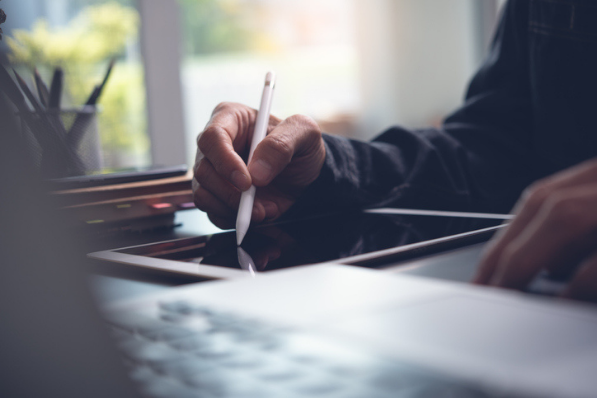After 5 minutes on stage, Louis C.K. had the audience at The Beacon Theatre erupting in laughter.
Except he didn't just grab the microphone, start cracking new jokes, and BAM!! --- everyone magically started laughing. Nope.
He knew EXACTLY what his audience would find funny because he previously tested these jokes at smaller venues (the Beacon Theatre is a historic venue in New York City). When a joke stuck, he'd use it at a new venue. When it flopped, he wouldn't say it again. He became successful by experimenting with new jokes.
Except here's the thing. Although we may have a few jokes up our sleeves, we aren't full-time comedians. Yet, like comedians, we ALL want to improve at our job. But we can't improve if we don't try new things.
If we don't experiment, we won't learn. If we don't learn, it's impossible to improve.
The same goes for becoming more productive. If we don't experiment with new tactics, we won't learn how to get things done faster. If we can't get things done faster, we will be slow to improve.
Improving productivity really boils down to one core idea:

Thus, I'm excited to introduce our first (of many) productivity experiments - using self-reported data to understand when you're most energized throughout the day.
Truly, the only way to improve productivity is personal experimentation.
I can tell you that during the mornings after working out I feel energized. After an “espresso nap” following lunch, I feel energized. Before I leave work around 6pm, I feel the most tired.
But this is me. Not you.
So here's the process I use for understanding my daily energy flow.
Because of our ultradian rhythms, I separate my day into 90 minute intervals (ex. 9 a.m. to 10:30 a.m.; 10:30 a.m. to 12:00 p.m.). After each interval is over, I rate my perceived energy on a scale from 1 to 5:
It takes two seconds to do this.
After a few weeks, I’ll have data visualizing which 90 minute intervals I feel most energized:
This self-reported analysis allows me to “plan” for specific times throughout the day to do high energy tasks.
If I know I’m going to be highly energized from 9:00am to 10:30am, I'll schedule high-energy activities (such as writing), versus low-energy activities (such as reading email).
But once again, this is my data. Your energy intervals will be different.
Here’s the process how you can start tracking your daily energy, which takes less than one minute to setup.
Step 1: Copy the Personal Energy Tracker form
First, make a copy of the Personal Energy Tracker responses spreadsheet by clicking File > Make a Copy.
(If you cannot click on Make a Copy, it’s because you’re not logged into your Google account.)
Step 2: Bookmark the live form
After you make a copy, click on Form > Go to live form:
A new page will open. This is the live form (which looks like a survey) where you input your data every day.
Now bookmark this page. This allows you to quickly reference it each day. To quickly bookmark in Google Chrome, just drag the lock icon to your bookmarks toolbar:
Step 3: Complete the form after each period
Since I fill the form out throughout the day, I just leave it as an open tab. After the 90 minute interval is over (ex. 9:00am to 10:30am), I click the tab and record my energy for that period. Then I switch back to what I was doing.
It literally takes two seconds:
After the old interval (ex. 9:00am to 10:30am) is over, I start the new one (ex. 10:30am to 12:00pm). When it's 12:00pm, I just switch back to the Personal Energy Tracker and rate my energy from one to five. I continue this until every time period is rated.
In total, it takes about 30 seconds per day.
After everything is completed, I simply hit Submit:
After hitting Submit on the form, an entry will happen in the spreadsheet as a "Timestamp", which looks like this:
Now it's time to analyze your data to spot trends in your energy throughout the day.
Step 4: Analyze your daily energy
After a few days (let alone weeks or months), you’ll have enough data to find those magical time periods when you're most energized. Of course, the more data you’ve collected, the more accurate your energy analysis will become.
To make things simple, I created two things:
1. A formula that calculates the average energy rating per time period.
2. A chart that visualizes that data.
When you first open the Personal Energy Tracker, it will be blank because you don't have any form entries, looking like this:
Notice how the "average energy rating" table and chart is blank. That's because you haven't added any data yet.
After you submit a form entry (from Step #3), you'll get a "Timestamp." When this happens, the average energy rating and visualized chart will be automatically filled out. After a few form entries, the spreadsheet will look like this:
TA DA! All you have to do is complete the form each day and the analysis is automatically done for you!
Easy as that.
Remember, the only way to improve is to experiment.
For world-class comedians, such as Louis C.K., they experiment with new jokes. For us, we obviously want to improve in other areas. Maybe that means closing deals faster or growing our personal network.
Maybe a prioritization template from a world-class entrepreneur will work for us. Maybe not. Maybe this working in 90 minute intervals will work for us. Maybe not. Maybe setting goals like Google does will work for us. Maybe not.
But improving anything will always require one thing - experimentation.






















